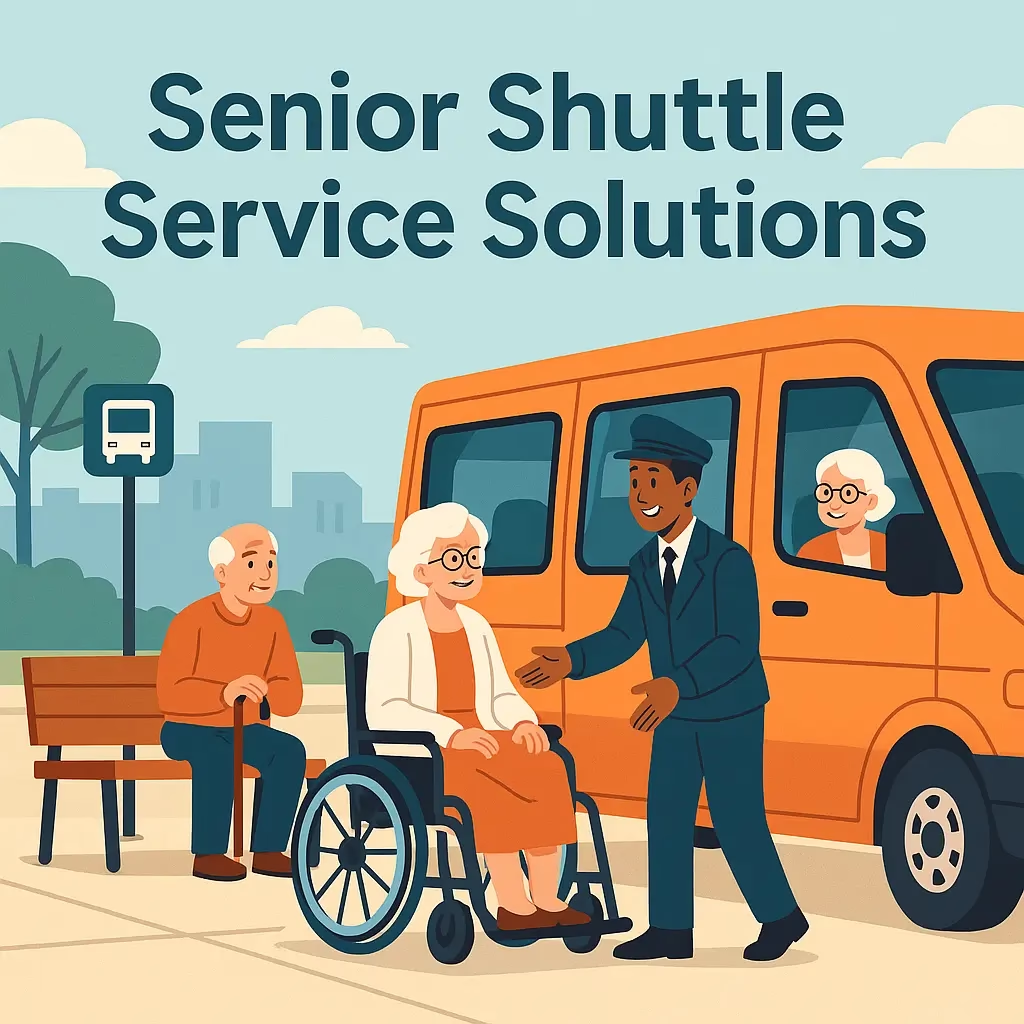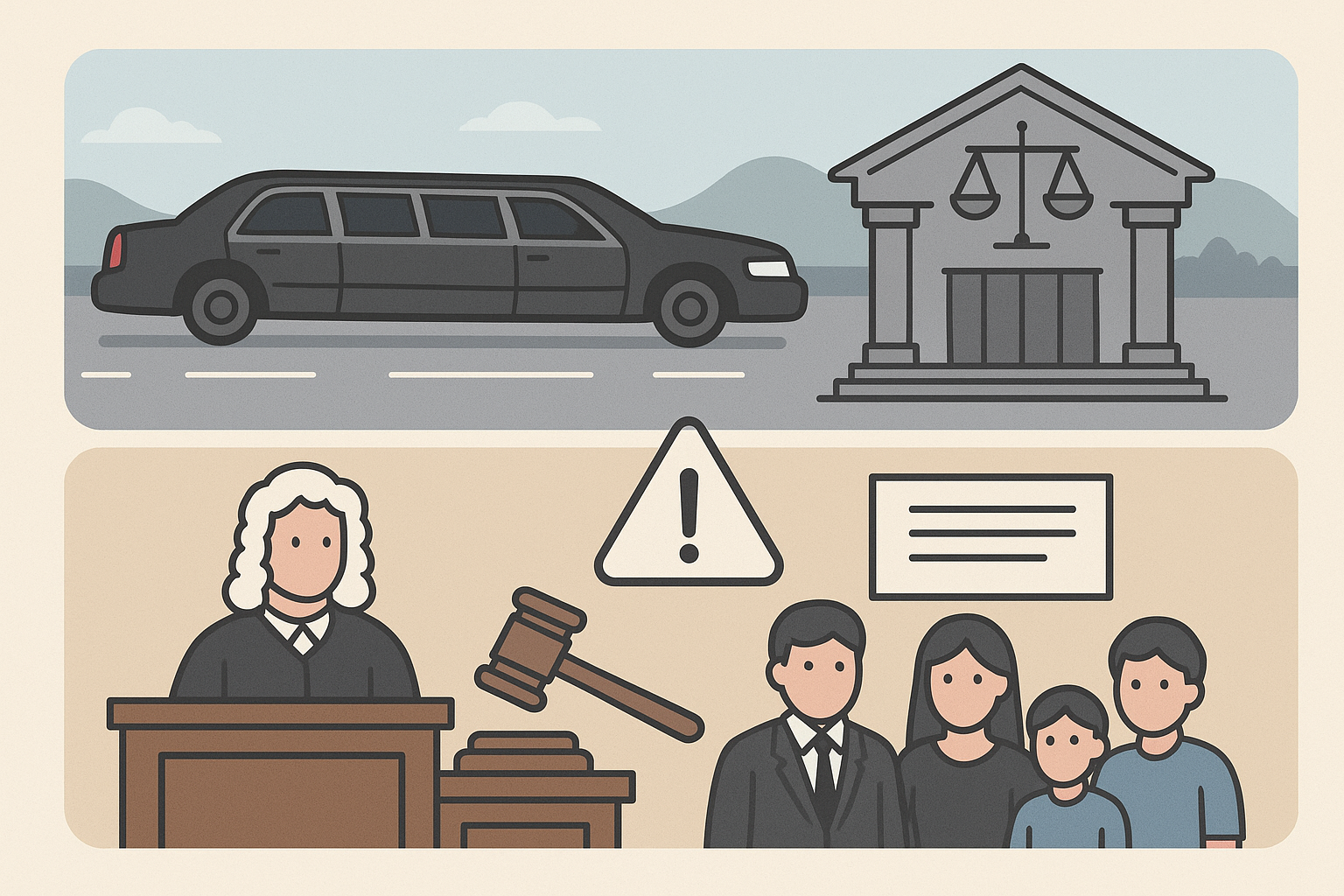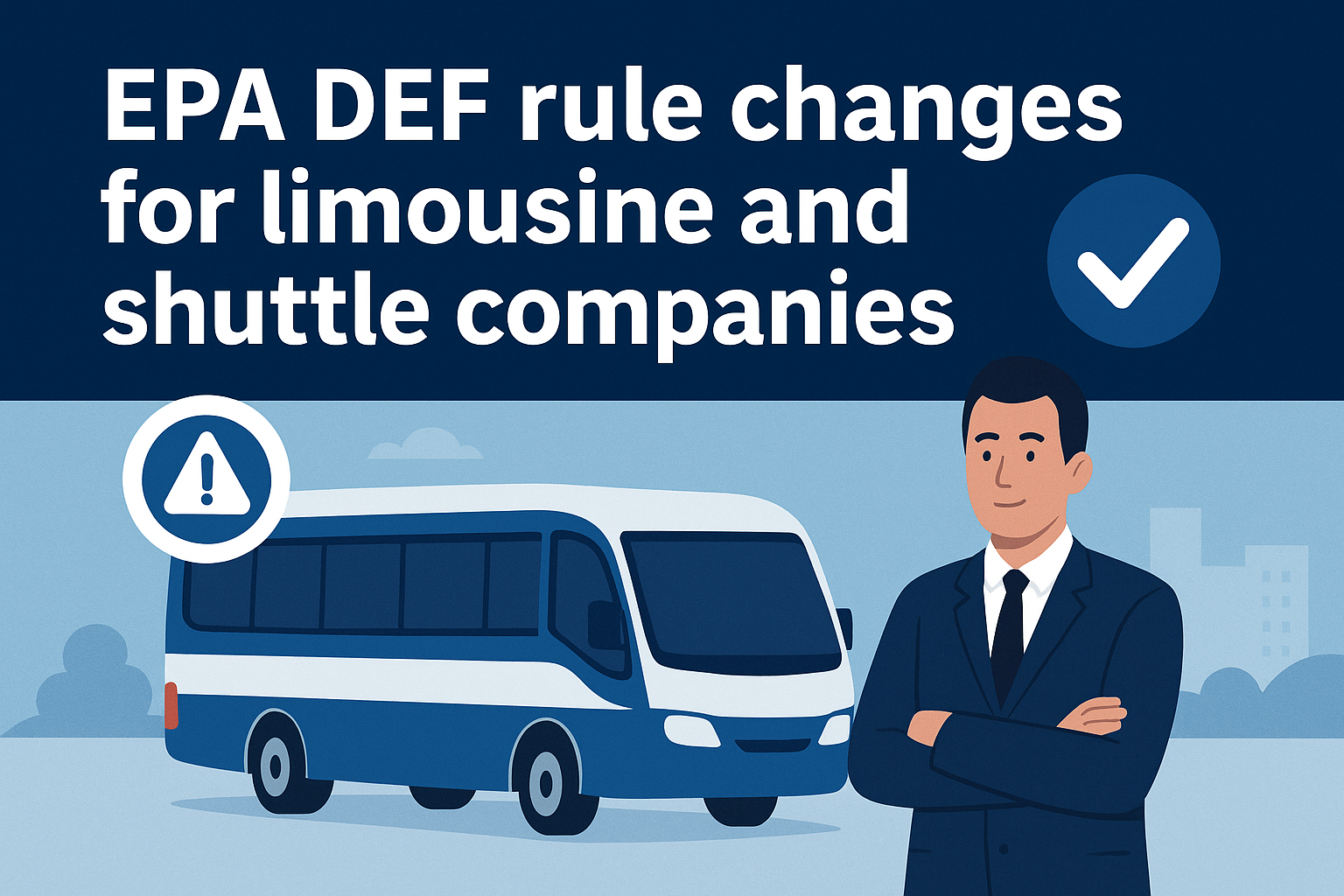Introduction
As the senior population continues to grow worldwide, so does the importance of accessible, reliable transportation. For many elderly individuals, the simple act of getting from one place to another can become a daily challenge—whether due to limited mobility, health concerns, or lack of support. Traditional public transit often falls short in meeting their specific needs, while private options like limousine services may be cost-prohibitive or lack necessary accommodations.
That’s where Senior Shuttle Service Solutions step in as a much-needed bridge between independence and accessibility. These services offer more than just transportation—they provide seniors with the freedom to attend medical appointments, visit loved ones, engage in community activities, and live with dignity. Tailored with accessibility in mind and powered by efficient dispatch systems, senior shuttles represent a transformative approach to elderly mobility.
In this comprehensive guide, we’ll explore the key elements that make senior shuttle services essential, examine the challenges and tradeoffs involved, and highlight how the right solutions can make a lasting impact. Whether you’re a service provider, caregiver, or concerned community member, this article offers valuable insights into creating safer, more inclusive travel options for seniors.
1. Understanding the Need for Senior Shuttle Service Solutions
The Issue: Growing Mobility Concerns Among Seniors
As the global population ages, one of the biggest concerns facing communities is senior mobility. Seniors often experience reduced driving capabilities due to declining vision, slower reaction times, or chronic medical conditions. This makes traveling independently a challenge. Public transportation, while available, is not always a viable option for elderly individuals due to long waits, difficult boarding, and inadequate routes.
Additionally, relying solely on family and friends can cause emotional strain and a loss of independence. Seniors may feel isolated or hesitant to ask for help repeatedly, leading to social withdrawal. Clearly, there’s a growing need for dependable transport options tailored to the elderly.
Solution: Rise of Senior Shuttle Service Solutions
To address this, Senior Shuttle Service Solutions have emerged as a game-changing approach. These services provide door-to-door transportation specifically designed to cater to the elderly’s unique needs. Features such as wheelchair access, personalized scheduling, and trained drivers make these shuttles ideal.
Moreover, the convenience factor is significant. Unlike traditional limousine service models that target luxury or business travel, senior shuttle services emphasize functionality, accessibility, and safety. Dispatch systems ensure prompt pickups and drop-offs, reducing wait times and enhancing reliability.
By focusing on the right infrastructure and service design, these shuttles allow seniors to maintain autonomy and stay active in their communities. This ultimately promotes mental health, physical activity, and a better quality of life.
2. Accessibility First: Designing Senior-Friendly Vehicles
The Issue: Traditional Transport Falls Short
Most standard vehicles are not built with the elderly in mind. Low seats, steep steps, and narrow doors can be problematic. In emergencies, these limitations become even more critical. The lack of user-friendly design directly affects the usability of any transport option for seniors.
Moreover, public buses rarely offer personalized help during boarding or deboarding, which can deter older passengers from using them altogether. For those with walkers or wheelchairs, the situation worsens.
Solution: Purpose-Built Vehicles
Senior Shuttle Service Solutions prioritize accessible vehicle designs. From low-floor minivans to high-roof vans with ramps, these services invest in mobility-enhancing features. Hydraulic lifts, wider aisles, and secure harnesses ensure safety while boarding and during transit.
Interior comfort is another key feature. Padded seats, non-slip floors, and adjustable handrails make the ride more pleasant. Unlike traditional dispatch solutions, these vehicles don’t just pick up and drop off—they provide an experience that centers around comfort and dignity.
With limousine service-style interiors modified for health and safety, seniors get the best of both worlds: comfort and functionality. Furthermore, driver training in handling assistive devices ensures a seamless and respectful experience.
3. Personalized Scheduling vs. Fixed Routes
The Issue: Inflexibility in Transportation
Many seniors have sporadic schedules based on medical appointments, social visits, or errands. Rigid transport schedules—like fixed bus or shared shuttle routes—don’t align with these needs. This mismatch often leads to missed appointments and added stress.
In some cases, limited service hours and geographical coverage reduce the feasibility of these services altogether, especially in rural or suburban settings.
Solution: Flexible Dispatch-Enabled Scheduling
Here’s where Senior Shuttle Service Solutions shine. Using modern dispatch software, services can dynamically allocate resources based on rider needs. This flexibility ensures that no senior is left waiting or rerouted unnecessarily.
Dispatch technology also allows family members or caregivers to book rides on behalf of seniors, track the vehicle in real-time, and receive updates. This transparency builds trust and adds a layer of security.
Rather than adhering to one-size-fits-all schedules, senior shuttles leverage limousine service-grade precision to serve users on their own time. In this way, technology becomes the backbone of comfort and convenience.
4. Affordability Without Compromising Quality
The Issue: Cost Barriers in Private Transportation
Private transportation, including limousine service, can be cost-prohibitive. While public transport is cheaper, it fails to meet the accessibility needs of seniors. The financial tradeoff often leaves elderly passengers with no viable option that is both affordable and safe.
For seniors living on fixed incomes, budgeting for transport must be balanced against healthcare and living expenses. This financial strain is a key deterrent to frequent travel.
Solution: Subsidized and Community-Funded Programs
Many Senior Shuttle Service Solutions are operated in partnership with local governments, non-profits, or religious organizations. These services are often subsidized, providing high-quality transport at little to no cost for seniors.
Some programs implement a sliding scale based on income, while others are entirely free. Additionally, partnerships with healthcare facilities allow for bundled transport options with medical appointments.
Incorporating efficient dispatch systems helps reduce operational costs, allowing services to stay within budget without cutting corners. Through such strategies, shuttle services strike the right balance between cost and care.
5. Safety First: Driver Training and Background Checks
The Issue: Trust and Safety Concerns
Entrusting a stranger with transportation can be daunting for seniors and their families. Reports of reckless driving, poor behavior, or lack of training can quickly undermine confidence in the service. Ensuring the safety of elderly passengers must be a top priority.
Unfortunately, not all services implement strict hiring standards or provide senior-specific driver education.
Solution: Enhanced Driver Screening and Training
Leading Senior Shuttle Service Solutions conduct thorough background checks, DMV reviews, and even psychological screenings before hiring drivers. Beyond that, they offer specialized training in senior care, mobility support, and emergency response.
Drivers are taught how to assist seniors without being intrusive, how to handle wheelchairs, and what to do in a medical emergency. These protocols align more with what you’d expect from a premium limousine service than a regular shuttle.
By investing in personnel as much as in infrastructure, these services offer peace of mind to families and a sense of security to seniors.
6. Integrating Technology for Better Experience
The Issue: Manual Processes Slow Down Services
When services rely on phone bookings, manual logs, and paper maps, delays and errors become inevitable. Seniors may miss rides, wait unnecessarily, or experience rescheduling chaos. These inefficiencies reduce trust and convenience.
Furthermore, poor communication between dispatch teams and drivers leads to inconsistent service quality.
Solution: Smart Dispatch and Ride Management Systems
Today’s Senior Shuttle Service Solutions integrate advanced dispatch software, GPS tracking, and mobile apps to streamline operations. Seniors can book through voice assistants or caregivers can schedule online. Real-time tracking ensures accurate ETAs.
Moreover, automated reminders reduce no-shows, and emergency contact notifications add a layer of safety. Such tech-forward approaches are inspired by the dispatch systems used in luxury limousine services—adapted to meet senior-specific needs.
Technology, when designed inclusively, becomes an enabler rather than a barrier. And in the context of senior shuttles, it elevates both the user and provider experience.
7. Ensuring Rural and Suburban Coverage
The Issue: Urban Bias in Service Availability
Most transport initiatives tend to focus on dense urban areas where demand is high. But seniors in rural or suburban areas face even greater isolation. Public transport is rare, and distances to healthcare or grocery stores are longer.
Neglecting these communities can exacerbate health and social disparities.
Solution: Decentralized Models and Community Partnerships
Effective Senior Shuttle Service Solutions extend their reach using satellite offices, community vehicles, and driver networks. By partnering with local organizations—like libraries, senior centers, or clinics—services can establish pickup points even in remote zones.
Additionally, some shuttles operate on a rideshare model supported by dispatch platforms. This increases flexibility while reducing fuel and labor costs. Again, borrowing elements from the limousine service model helps create a responsive rural service.
Such efforts bridge geographic gaps and ensure no senior is left behind.
8. Fostering Social Engagement Through Mobility
The Issue: Transportation and Senior Loneliness
Mobility isn’t just about reaching a destination—it’s about staying connected. Many seniors face emotional isolation, particularly those who no longer drive. Without easy transport options, they skip social events, worship services, or visits to family.
This disconnection can have severe mental health consequences.
Solution: Shuttle Services That Encourage Community Participation
Beyond functional trips, Senior Shuttle Service Solutions can offer group rides to community events, religious services, or shopping trips. These shared experiences foster camaraderie and reduce feelings of loneliness.
In some areas, services even coordinate with event planners or retirement homes to provide bundled experiences. The use of dispatch tools ensures optimal routing and group management.
By making transportation a social catalyst, shuttle services do more than move passengers—they rebuild social lives.
9. Coordinating with Healthcare Providers
The Issue: Missed Medical Appointments
Transportation is one of the top reasons seniors miss medical appointments. This not only delays treatment but also increases long-term healthcare costs. Relying on overburdened family members is not a sustainable solution.
Without reliable shuttle options, health outcomes decline.
Solution: Medical Ride Integration via Dispatch Services
Modern Senior Shuttle Service Solutions coordinate directly with clinics and hospitals. Dispatch systems sync with appointment calendars, ensuring timely pickups and minimal wait times.
Some healthcare providers even subsidize these rides, recognizing the cost-saving benefits. Vehicles are equipped to handle patients post-surgery or with mobility limitations—mirroring features found in luxury limousine fleets, but designed for wellness rather than leisure.
This integration of transport and healthcare promotes continuity of care and empowers seniors to prioritize their well-being.
10. Sustainable and Scalable Operations
The Issue: Long-Term Sustainability Challenges
Without ongoing funding, community support, or system upgrades, even the best shuttle services can falter. Scaling up to meet growing demand requires investment and innovation. Environmental concerns also factor in—many services still rely on fuel-heavy vehicles.
Solution: Green Fleets and Public-Private Models
Many Senior Shuttle Service Solutions now incorporate electric or hybrid vehicles, reducing their carbon footprint. Others use route optimization tools to minimize mileage.
Scalable models often involve partnerships with private limousine services, sharing dispatch infrastructure for better efficiency. Additionally, subscription models or donor-supported platforms provide financial stability.
Sustainability means thinking long-term—balancing operational cost, environmental impact, and user experience.
Conclusion
The future of senior transportation lies in creating systems that are not only functional but also empowering. Senior Shuttle Service Solutions represent a convergence of thoughtful design, smart dispatch, compassionate service, and community involvement.
They’re not just rides—they’re a lifeline to independence, health, and happiness.
To ensure smooth, professional, and reliable support for any dispatch or transportation service, consider working with the experts at Saztech Solutions. Their advanced dispatch platforms and customer support systems can transform how your shuttle service operates—whether you’re scaling operations or just starting out.
Home | About Us | Pricing | Get Started | FAQ | Dispatch Daily | Contact Us
WhatsApp | Facebook | LinkedIn





Leave a Reply